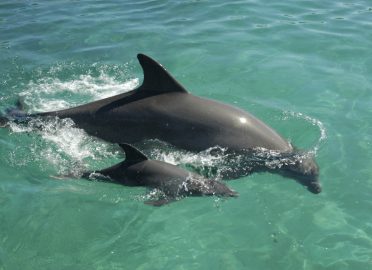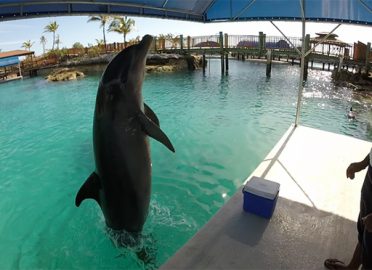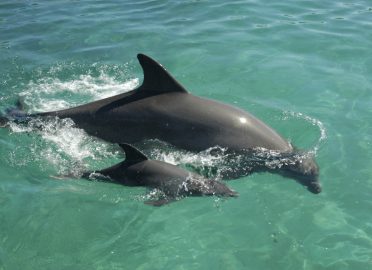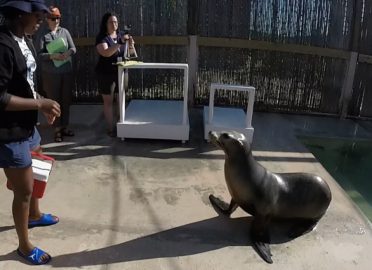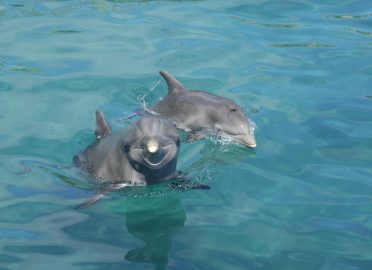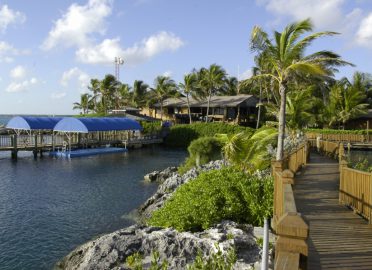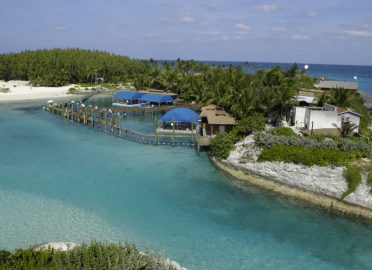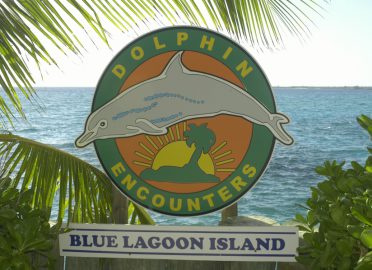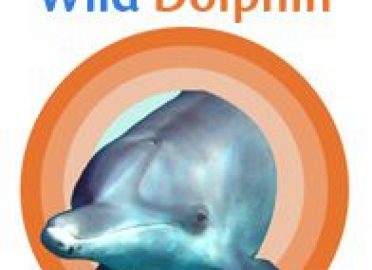Innovative Summary!!
Today was a day for wrapping up cameras, reviewing data sheets and videos to confirm all is copied to a second hard drive and packing for the return trip home. Allison left this morning and Dawn and I depart tomorrow.
Last Day of Data Collection!
Thursday was our last day of data collection for our Innovative/Creativity study of the dolphins and sea lions at DE. It was another successful day of data collection! Here, you can see Stormy with O'Kelle during a morning session!
We had 12 sessions with the dolphins to bring all our numbers up to four trial sessions for all the females and three to four sessions each for the males.
Sunshine!! and LOTS of data!!
Today was a wonderfully sunny and warm day! A welcome change from yesterday. And, we collected LOTS of data: we had 36 sessions for data collection with the dolphins and sea lions. We now have 3 repeat sessions with almost every animal who knows the cue for innovate/create. It is really exciting to see the individual differences now become apparent! For example, neither Aunty V nor Stormy are "morning dolphins." They are much better creatively in the afternoons!
We also coordinated with the trainers for completion of dolphin personality scale surveys.
Sea Lions, too!
Yes, it's true! We are collecting data on how creative and innovative the sea lions at DE are also! That is, we are not only looking at the dolphins.
Rainy Days and Mondays …
If I remember the song correctly, rainy days and Mondays get the singer down ... That was not the case at DE with innovative data collection today! Yes, it was rainy, with a bit of lightning and thunder thrown in for good measure. But, the dolphins did not let rain get in their way and neither did the trainers nor us researchers! And, after a few minutes, we were just as wet as the dolphins!
Here, you see Zoe and Javon finishing a research session with innovative behaviors.
Sunday – Day 1 for Data Collection!
Thank you DE!! Allison and I were able to observe and record 19 innovate sessions with the dolphins and 4 with the sea lions! We witnessed a variety of behaviors from leaps, spirals, spits, vocalizations and more! We were able to record three moms with their calves "in tow" watching and (we think) learning! Two of the younger male dolphins presented new behaviors they'd been learning ... practicing their new skill(s), it seemed!
Our tally in video data for the day was ~18 GB of video with a GoPro and 47 minutes of videotape on our second camera.
Arrived to Nassau and greeted by warm sunshine!
Allison and I arrived today, albeit on different flights. We are settled in at our lodging and have groceries stocked. Our cameras are prepped - batteries charged, tapes loaded. I spoke with Mr. Johnson to coordinate our pick up transportation for tomorrow.
We are ready to collect data! And, I will introduce Allison to the DE team and the dolphins bright and early tomorrow morning! Dawn arrives tomorrow and we'll bring her up to speed.
We'll have an update on our first round of observations and data collection tomorrow.
Cheers
Kathleen & Allison (& Dawn & Dee ...
All Packed and Ready to Go!
As the song says ... "all my bags are packed and I'm ready to go ..." Departure is Saturday morning from Fort Lauderdale (for me) to Nassau, The Bahamas. There is not much of a climate change for me with this trip, but I do believe the temps will be a bit warmer than currently in FL!
We arrive tomorrow and will get settled in and prepare the MVA2 and cameras for observations and data collection. We head out to DE on Sunday bright and early.
I'm looking forward to assisting on this trip.
DCP Research at Dolphin Encounters – 2016
In two days, I depart for Nassau, The Bahamas, for a week of data collection at Dolphin Encounters at Blue Lagoon Island (DE). I'm looking forward to returning to DE to continue our research, meet the new dolphins and touch base with the training team! This research trip is a bit different for me/DCP. It will include three colleagues from two universities and focus on collecting data to better understand creativity in dolphins.
Drs. Deirdre Yeater and Dawn Melzer, both Assistant Professors from Sacred Heart University, and Dr.
Order by tomorrow for pre-Christmas delivery!
Our adopt-a-wild-dolphin kits make great Christmas gifts. In order to ensure pre-Christmas delivery of our hard copy kits, be sure to place your order by tomorrow, Friday 18 December, by 5 p.m. EST and choose expedited shipping.

